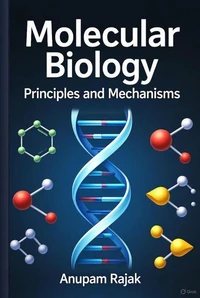Plant breeding is the foundation of modern agriculture and food security. The continuous improvement of crop varieties through selection, hybridization, and advanced biotechnological tools has transformed global agriculture, ensuring higher yields, improved quality, and resilience against biotic and abiotic stresses. This book, "Plant Breeding", is designed to provide a comprehensive and up-to-date resource for students, researchers, and practicing plant breeders.
It covers both classical breeding methods, such as selection, hybridization, and mutation breeding, as well as modern approaches, including molecular breeding, marker-assisted selection, tissue culture, polyploidy, and wide hybridization. Each chapter has been carefully structured to explain fundamental concepts, practical breeding techniques, and real-world applications. Examples from cereals, legumes, vegetables, fruits, oilseeds, and ornamentals are included to illustrate how plant breeding has addressed nutritional, industrial, and environmental challenges.
The primary aim of this book is to bridge theory and practice, providing readers with the knowledge required to understand the complexities of plant improvement while equipping them with the tools to apply this knowledge in research or agricultural practice. Special emphasis has been placed on stress tolerance, quality traits, and molecular approaches, which are increasingly critical in the era of climate change and food security challenges.
I hope this book serves as a reliable reference and learning companion for students preparing for exams, researchers exploring new breeding strategies, and professionals striving to develop superior crop varieties. Your feedback and suggestions for further improvements are always welcome.
Plant breeding is the foundation of modern agriculture and food security. The continuous improvement of crop varieties through selection, hybridization, and advanced biotechnological tools has transformed global agriculture, ensuring higher yields, improved quality, and resilience against biotic and abiotic stresses. This book, "Plant Breeding", is designed to provide a comprehensive and up-to-date resource for students, researchers, and practicing plant breeders.
It covers both classical breeding methods, such as selection, hybridization, and mutation breeding, as well as modern approaches, including molecular breeding, marker-assisted selection, tissue culture, polyploidy, and wide hybridization. Each chapter has been carefully structured to explain fundamental concepts, practical breeding techniques, and real-world applications. Examples from cereals, legumes, vegetables, fruits, oilseeds, and ornamentals are included to illustrate how plant breeding has addressed nutritional, industrial, and environmental challenges.
The primary aim of this book is to bridge theory and practice, providing readers with the knowledge required to understand the complexities of plant improvement while equipping them with the tools to apply this knowledge in research or agricultural practice. Special emphasis has been placed on stress tolerance, quality traits, and molecular approaches, which are increasingly critical in the era of climate change and food security challenges.
I hope this book serves as a reliable reference and learning companion for students preparing for exams, researchers exploring new breeding strategies, and professionals striving to develop superior crop varieties. Your feedback and suggestions for further improvements are always welcome.

 , qui est-ce ?
, qui est-ce ?